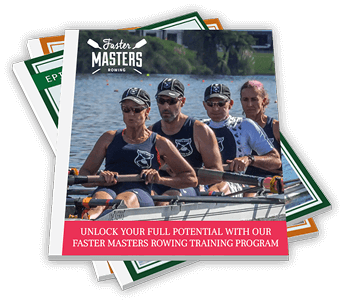Get confident steering your coxless boat for long distance racing.
Timestamps
02:00 Going straight
This is the first lesson because if you can't go straight it really affects your steering. Consider your strength imbalances if you have been a long term sweep rower moving to sculling. Equalise your arcs by watching and listening for these three things
- Entry timing
- Release timing
- Pressure
If your strength is unequal - don't over-power one side compared to the other, row the same arc.
05:00 steering off a point. Watch your wake - see if it is going straight, keep an eye - your stern. Learn how to set your point off a landmark on the bank like a tree or building. Row away from the point and watch your wake to see if it's going straight. Learn to make small corrections before you are way off course.
06:00 Where the boat pivots is approximately in the middle of the boat.
07:00 Bridges
Not all bridges are created equal. First choose which arch you want to go through in the race. For HOCR at Weeks Footbridge you have to both steer the bridge and make a sharp turn after passing under the bridge. Decide where under the bridge you want to pass - is it in the middle or more to one side or the other? This depends on what you need to do after the bridge. Ideally row the course before the race to learn the course. Line yourself up under the bridge so you can see what your points are as you go through the bridge so you know what to steer off.
10:45 Bridge supports are where to focus your line of sight. Two ways to look around in a rowing boat - a glance over the shoulder and a complete turn to see your bow ball and what's directly in front of you. Look for the uprights of the bridge - these are easier to spot than the gap in between.
For a bridge you want to go through straight. Decide which upright you want to steer off - choose one (right or left), do a glance, then decide if you need to do a steering correction. If there is a stream (racing against the stream) you may choose to be closer to the bank so you minimise the effect. Take a second glance as you get closer and correct if you need.
14:00 For bridges you go through not in a straight line - know where you need to go after the bridge. Relative to the uprights, decide where you want to position your boat. Is the bridge wider (a highway or motorway)?
Rebecca prefers to steer before you go under the bridge so you come out straight for the next part of the course - push off the bridge as you exit it. Line up your stern so you know where you want to go through it. 16:00 High and long bridges like Interstates or motorway bridges. Keep an eye out for posts or markers near the abutments. Bridges often have underwater structures wider than the abutment above the water - these create eddies which swirl the water.
17:15 Corners
A sharp corner cannot be navigated with pressure. It takes too long to do. Turning to port - use your starboard oar take a short stroke from catch to cross-over, use fast short strokes. Do as few strokes as possible when steering a corner. This is slowing the boat down so minimise the strokes you take.
20:00 Looking and steering corners. Turn your head to look around without disrupting your balance and rhythm. Practice in training, turning your head (it weighs 15 lbs) without upsetting your balance. Alternate looking around then do pressure steering. Don't steer until after you have taken a look around. The exception is if a crew is closing fast behind you but you can see them coming so don't need to look around. Know where the corner begins for a long gentle corner. Start the turn with a few gentle turning strokes. Then look and go straight for a few strokes, take another look. Then make steering adjustments and alternate looking and pressure steering. Expect to look around frequently. Count strokes to help you make a sharp turn in a practice outing so you know what to expect in the race.
24:00 Buoys
Know the race rules - are you penalised if you hit them? Some you can scull over the top of like albano system marker buoy. Or will you be penalised if you hit them? Improve your bladework so you know if you can feather high over the buoys? Turning buoys - if you bump into one they may not turn over and get out of your way. You may need to hold water. as you turn. Come into a turning buoy at an angle. Use a mini restart after a turn to get back up to speed rapidly.
28:30 Carlo Zezza Book Winning Head Races includes course maps and advice for popular rowing races like HOCR, Silver Skiff and London Tideway Head Races.

